Cucumber Farming: How to Plant, Grow, and Harvest Cucumbers

Do you wish to learn how to grow cucumber in your garden from seed? If yes, then continue reading because this cucumber farming guide will expose you to a lot of secrets of this business.
Let’s say you are a cucumber farmer and you wish to diagnose your cucumber farm to know whether you are doing the right thing. Or perhaps you are new in this commercial cucumber farming business altogether. Whichever category you fall under, this article will help you to achieve success.
When you carefully apply the tips in this article, you will begin to get a better yield from your cucumber plantation.
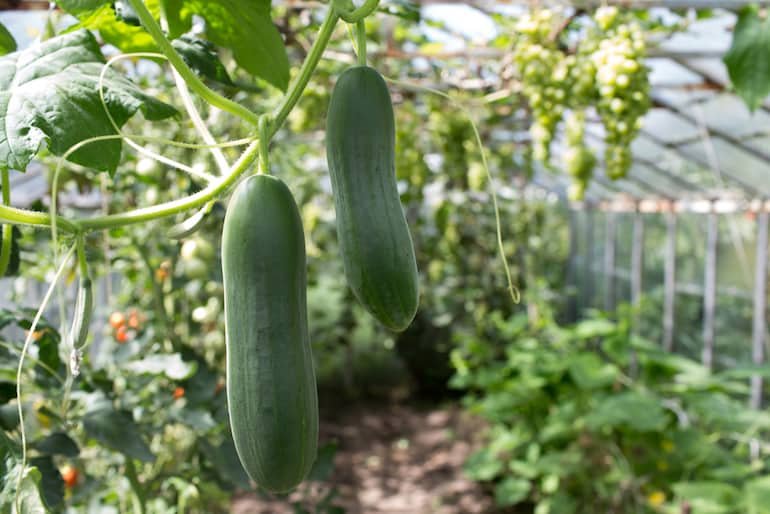
How to start a cucumber farming business
You can agree with me that there’s a large sea of untapped opportunities in the Agriculture Industry. One of these abundant opportunities is cucumber farming.
Cucumber (Cucumis sativus) is an edible fruit having a green rind and a crisp watery white flesh good for food. A lot of people go into the business of cucumber farming without any knowledge of the niche. As a result, when challenges that they’re unable to handle arise, it cripples their business
However, you are a wise farmer. I’m glad you have come here to get practical insights on how you can make thousands in cucumber farming within a few weeks.
Now I’m going to share ways you can produce what the consumers are looking for because that’s the only way you can make cool cash.
This business has good income flow and that’s the reason fruit-producing farmers keep their cards close to their chests.
In this post, I’ll share practical insights on ways you can break even in this cucumber farming business.
As I have always done in previous lessons, I’m going to be as practical as possible.
I’ll untie the knots to make you understand the real productive steps in growing cucumbers and having a bumpy harvest after 8weeks.
Also read about this simple Peanut Farming Guide.
The Step-By-Step Cucumber Farming Process
No matter the location you find yourself, this cucumber farming process remains the same.
The only exception would be locations with weather conditions that do not adequately support the successful growth of cucumbers.
Especially those growing cucumbers in frosty areas.
You will only need to make a few changes to the time of planting and how you plant the cucumber.
I will still share tips on how to go about cultivating cucumbers in frosty areas that will guarantee high yields.
Step 1: Conduct a Feasibility Study and Prepare a Business Plan for Cucumber Farming

A lot of people dive into farming and other agribusinesses because after hearing that it is a money-spinner.
As a result, they don’t bother to carry out feasibility studies to know everything about the business.
Their response to the need to carry out a feasibility study for cucumber farming will definitely be a question.
They ask such question like;
- Why should I get a business plan for my cucumber farming business?
- Is it really necessary to conduct a feasibility study for cucumber farming?
- Won’t I succeed if I don’t have a business plan?
You probably already know the correct answers to these questions.
Ordinarily, when you don’t plan a trip, you’ll obviously miss your route, spend more than your budget and lose focus.
So for your cucumber farm projects, it is necessary to carry out a financial analysis (expenses and income projections), marketing strategy and survey, manpower requirements, business location and accessibility.
There’s a high chance that you’ll succeed without a business plan, also there is high chance that you may fail in this business. However, the reason you should get a business plan is to keep you on track while running the project. This will help you not to deviate from the norms of the game like spending much of your profit.
Also, it helps you to ensure that you maintain the necessary standards for success.
So, you need a cucumber farming business plan to run your farm in a structured and organized manner.
Step 2: Selection of a Suitable Land for the Cultivation of Cucumber
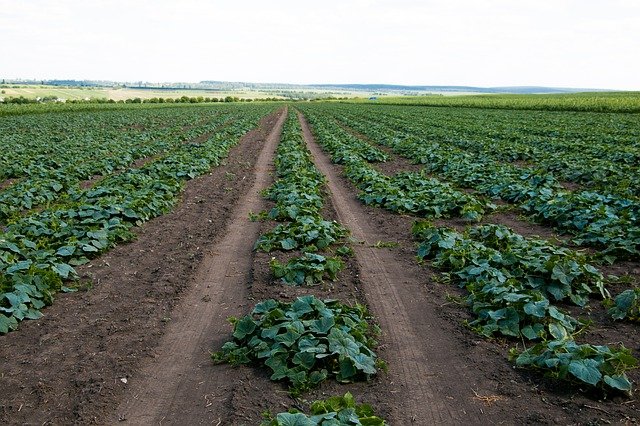
You can grow cucumbers in almost all the parts of the country so it doesn’t really matter where you’re.
The best soil for cucumber farming is light to medium, well-drained loam soil that is rich in organic matter with moderate soil moisture.
Cucumber plants require a neutral to slightly alkaline pH range of 5.5 to 6.5 for optimal development.
Ideally, you should select an area that has sufficient exposure to sunlight because sunlight is essential for cucumber growth.
Finally, the site shouldn’t be too far from your potential market or target customers.
This is very important so that you do not spend so much to transport your cucumber harvest to the market.
Step 3: Land Preparation for Planting Cucumber

In preparation for a successful cucumber farming business, there are certain things you need to do to get the land ready for use.
Ensure you don’t use forests unless it’s your last option.
This will help reduce the overhead cost of deforestation.
If the land you have has thick vegetation covering everywhere, that too is not a problem.
I will show steps to clear the land properly for planting your cucumbers.
After successfully choosing a suitable site for cultivating your cucumber, clear all bushes in the area immediately.
The reason for clearing the bushes around the area is to allow more sunlight to the soil.
Also, it helps to remove weeds and undergrowth which might otherwise compete with the growth of your cassava.
Here are the steps you should follow when preparing the land for cucumber farming;
Clear thick vegetation in the cucumber farm
- Clear the land and cut the tall trees. Brush the land to make it bare.
- I’ll not advise using the bush-burning method to clear the vegetation. This is important so that you will not disrupt the activities of nitrogen-fixing Bacteria/microorganisms in the soil. These organisms play important roles in cucumber farming.
- In a situation where you have high vegetation, you can do partial bush burning by packing and heaping in bits and burning them up. The ash can serve as manure too so it’s not bad.
- If you are using bulldozers, be mindful not to totally scoop away the topmost nutrients of the soil.
Related: 5 Best Herbicides for Cassava Weed Management
Plow the land for cucumber farming
After clearing the bushes in the land, the next thing to do is to make ridges.
You can decide to make either long or short ridges.
I actually use long ridges with a height of about 1 foot and a width of 3 feet.
It’ll make mulching much easier.
Make sure to plough the ground very well as cucumbers are best grown on loose soil types.
Finally, ensure to get rid of rhizomes while plowing the land.
Step 4: Add Compost Manure to Fertilize the Soil in the Cucumber Farm

While plowing is ongoing, you can begin to make your compost pile.
- Use Animal dung, wood ash, and gathered grasses.
- Wet the compost and allow for about a week to decay properly.
- When your compost organic manure is ready, apply it on the beds/ridges and mix vigorously with the loose loamy soil.
Important details to note when fertilizing your cucumber farm
- Be mindful and ensure that farms from where you procure the animal dung are free from viral, bacterial, and fungal infections as they may affect your crops.
- Also, when you get the animal dung, please sun-dry it for about 72 hours to kill any microbes present.
- Where you don’t have sunlight, pour hot water mixed with ginger, neem water, and garlic and air-dry for 5-8 days.
- Also, please don’t join conventional farmers who use NPK 15:10:10 as a soil booster.
- Only use organic manure. Here’s the big WHY. Cucumbers are made up of about 85-90% water and they retain the chemicals used in growing them.
- So, to avoid growing cucumbers that are toxic to the human body after consumption, avoid using chemical fertilizers.
Related: Learn How to Grow Squash Plant – The Complete Squash Farming Guide
Step 5: Select Viable Cucumber Seeds for Planting

So, at this stage, you are done making the ridges and incorporating the manure into the soil.
Up next, select a viable cucumber seed for planting.
There are so many varieties of cucumber seeds from different companies and countries.
But because you are in business, you wouldn’t want to buy any type of cucumber seed.
So, you have to examine if the seeds are open-pollinated or closed seeds.
Also, do you have to confirm whether they are local or foreign seeds or a hybrid?
This is crucial because while some seeds produce 1 tonne per acre, others produce less.
However, some of those seeds are genetically modified and presented as F1(hybrid) species.
So, it’s important you buy from trusted and viable seed-producing companies.
Some companies that sell good cucumber seeds include East-West Seeds and Technisem.
You may also contact the seed regulatory body of Nigeria to confirm the seeds you’re buying.
There are also affiliate wholesalers like Songhai farms, IITA, Agro Story Nig., etc. where you can get viable seeds, cultivars, and seedlings for farming purposes.
Step 6: Irrigate the Cucumber Farm

Depending on your location, you’ll need to have a standby plan for irrigation because you might not see rainfall.
It’s either you use a drip irrigation system, sprinkler irrigation, or manual irrigation (using watering cans and hose pipes).
A major requirement for irrigation is for you to have a source of water (borehole, flowing stream, well, etc.)
So, after applying the manure, wet the entire farm in a soggy manner and allow for 24 hours to circulate around the farm before planting.
Irrigate your cucumber farm at least 5 times a week. But, when it starts raining adequately, you’ll not need to irrigate the cucumber farm again until you see the soil getting dry.
Just like you already know, the Northern and Western part of Nigeria is a tropical zone with lesser amounts of rainfall. As a result, you don’t need to wait for rain before irrigating your multi-million naira cucumber farm.
While irrigating your cucumber farm, PLEASE DO NOT do so on a hot afternoon. Irrigation is more effective very early in the morning between 4:00 AM and at least 10:00 AM and evening between 4:00 PM and 7:00 PM. This, however, depends on the intensity of the Sun.
If the weather is mild, you can do a flow-through via your drip tapes, watering cans, etc.
Step 7: Plant the Cucumber in the Ridges
So after wetting your ridges or maybe luckily, there was rainfall, then you go ahead to plant the cucumber seeds.
Here is how to plant cucumber seeds in the soil and spacing
- Plant cucumber seeds 1 inch deep. If you can’t measure 1-inch depth, just make sure the seed does not go deeper than the second line on your index finger.
- Ensure to face the pointed side of the seed upwards as you dip your index/pointer finger with the seed.
- After planting the cucumber seed, close the opening with loose sand and then move to the next 1 foot.
- Typically, the plant spacing for cucumber plants can also reach about 2 to 3 feet apart in a row, depending on the variety.
- However, spacing cucumbers at 1 foot apart allows you to stake your cucumbers using a trellis and make your farm look neat.
- You can also plant cucumbers in mounds (or “hills”). If that is the case, space the plants 1 to 2 feet apart, planting 2 to 3 seeds in each mound.
- Once plants reach 4 inches in height, thin them to one plant per mound.
- If you live in cooler climates, you can help warm the soil by covering the hill or row with black plastic.
- After planting, mulch around the area with straw, chopped leaves, or another organic mulch to keep pests away, and also keep bush types off the ground to avoid diseases.
- Using a trellis is a good idea if you want the cucumber vine to climb, or if you don’t have enough space. Trellising also protects the fruit from damage from lying on the moist ground. See how to build a trellis and support for vining vegetables.
- Cover freshly planted cucumber seeds with netting or a berry basket if you have pests in your garden. This will keep them from digging out the seeds.
How long does it take cucumbers to germinate?
So at this stage, let’s assume you’re done planting.
You’d expect that after 4 – 6 days, the cucumber will germinate.
However, if you insert the seeds deeper than the specifications, it will take time to germinate and in the end, not all will survive.
This is because the plumule will become weak before sprouting.
Step 8: Stake the Cucumber Vines Using Trellis

So after 2 weeks, the strands of the cucumber will start getting longer, which means you have to stake them.
And so, using bamboo beams, stake the cucumber plant and use ropes/twines to connect strands to bamboo.
Staking is actually a very important step in cucumber farming.
This is because, when you don’t stake, the cucumber will not produce well.
Staking is essential, as it makes the fruits/vegetable retain their greenish color unlike when you leave them on the ground, they turn white on that part.
Also learn about Cucumber Companion Plants to know the best and the worst crop to grow together with cucumber.
Step 9: Prune the Cucumber Plants
Pruning your cucumber plants is optional.
The only reason I prune is to make room for multiple stems/strands to enable the cucumber to produce more fruits.
But I must tell you that this is technically done else you damage the cucumber plants and they’ll wither away.
Unless you’re an expert, try it on a small portion of the farm to see the result.
Step 10: Apply Pesticides/Insecticides to Protect the Cucumber Plants
People must have told you about the efficacy of pesticides and insecticides.
Oh yes, they get rid of pests before you can say, Jack.
However, they have adverse effects on plant growth and fruit edibility.
They are toxic as the plants retain the moisture content of the chemicals on them.
Again, when you spray chemicals, they kill those useful insects and flies responsible for pollination.
I believe you know what will happen when pollination doesn’t take place… flowering will not take place.
If you have a lot of pests disturbing your cucumber farm, there is an organic concoction formula that you can use to get rid of the pests.
This is first-hand information, you may not get it elsewhere.
My Organic formula for driving pests and insects from cucumber farm
- Boil some quantity of neem leaves and moringa leaves.
- Mix a handful quantity of dried/mashed plantain leaves, ground ginger, and garlic in the water.
- Pour the solution into your knapsack sprayer and spray the farm every 3days.
- This will take care of beetles, thrips, aphids, spiders, mites, caterpillars, etc. affecting your cucumber farm.
So, a few weeks after staking, the plant will start flowering (typically yellow in color), and fruiting will set in.
Two weeks after fruiting commences, the size will continue to increase until it’s ready for harvest.
We are getting to the peak of this cucumber farming guide and I believe it has been interesting so far.
So, let’s go on.
Most farmers always want to hear about the marketing side of the story because that’s the side that brings the money.
We’ll get there shortly.
Step 11: Properly Harvest the Cucumbers When They are Ready

This is another important aspect of cucumber farming that many are ignorant of.
I harvested cucumbers 5-6 times in a portion of land which could be attributed to these factors
- The variety of cucumber seeds grown
- Management practice in the cucumber farm
- Harvesting pattern or style
The question is, how do I achieve a 5-6 times bumpy harvest?
It’s a normal trend for one to harvest once and the cucumber plants will wither.
But, I’m about to share what has been working for me over the years:
Tips to properly harvest cucumbers to get a bumpy harvest
- To harvest cucumber fruits, use a pair of scissors to cut the fruits, leaving a short stump attached, or carefully plug with your hands.
- If you plug directly from the nodes, you’re telling the plant that the yield you’ve got is enough for you. So, leave out ½ inch strand on the cucumber.
- Another thing is, to start harvesting from the bottom as the fruit matures.
- Don’t harvest any cucumber that’s not yet matured. Give it time
- Also, while harvesting, give the cucumber stems/strands a way to climb more.
- Finally, add manure to supply nutrients to the plant (that’s if you can) and also irrigate the farm.
With these tips, you can be sure of harvesting up to 5-6 times from the same piece of land before the cucumber plants wither.
Now, after harvesting your cucumber, it is ready for the market. But then, what next?
Also learn about How to Grow Watermelon Step-by-Step.
Step 12: How to Market and Sell Your Cucumbers to Make Plenty of Profits

Almost everyone wants his or her farm produce to be sold out and on time so as to avoid the deterioration of perishable ones.
We have discussed various steps in cucumber farming in this article.
Have you taken a deep breath to think about the market penetration strategy?
As always, I’m going to be as realistic to you as possible.
I suffered a lot trying to sell my farm produce a few years ago while running a cucumber farm.
Honestly, I don’t want you to make such mistakes as I did.
Those years were years of ignorance!
Follow these tips below to sell your cucumbers and make good profits
– Know your market
Your market includes your very family members, friends, and every other person.
Start telling them what you have, even before harvest.
Sign up with online/social media platforms where people buy and sell agro produce anywhere in Africa and the world.
So, to make your cool cash from growing cucumber, target your consumers and know where and when they need the product.
Do not neglect the selling power of ordinary market women.
Knowing when people need things will help you know the exact season to produce.
– Produce cucumbers in the dry season to make more money
Here’s what works;
Lots of farmers grow cucumbers during the rainy season (between April and September) because cucumber actually needs water for growth, right?
But I make more money in the dry season than in the rainy season because I practice the irrigation system of commercial agriculture during drought.
Did you get that secret?
So, you find out that the demand for cucumber is higher in the dry season than in the rainy season.
And sadly enough, not too many people produce cucumber during the dry season.
This could be because they are ignorant about it or they don’t have access to an automated irrigation system.
So when you plant cucumbers between October and March… you’ll make higher profits.
At this point, any price tag you put in will be accepted by the consumers and off-takers because the demand is high.
That’s also a marketing strategy for you.
– Export cucumbers to other countries
You can also choose to export your agro-produce because it commands a higher revenue.
That’s another marketing strategy too.
Other marketing strategies for selling your cucumber harvest very fast include;
- Make your produce as fresh as possible.
- Leverage the power of social media as a winning tool for marketing your products online.
- Tell everyone about what you have and why they need it.
- Reduce your price slightly at infancy. Use promo sales to penetrate the market. However, be careful with promo sales so that you can still make a profit from your hard work.
Health Benefits Of Cucumber
So many people have said a lot about the nutritional benefits and medicinal qualities of this vegetable.
However, here are a few things you may need to know about Cucumbers.
- Cucumbers protect the brain from neurological disorders
- It reduces the risk of cancer
- Helps to fight inflammation
- It contains antioxidant properties like Vitamin C and beta-carotene
- Freshens your breath and eliminates bad breath
- It also contains multiple B vitamins that help in the management of stress
- Cucumbers support digestive health because of their content of water and fiber
- Cucumbers are low in calories helping you to maintain a healthy weight
- They contain potassium which supports a healthy heart
- Protects skin against aging
- Relieves pain because of its contents of Flavonoids and tannins
- Cucumber is a great source of vitamin K making the bones strong.
Conclusion
So, when you follow every step in this cucumber farming guide, I bet you’ll be able to produce and sell off your cucumbers, even before they are ready for the market.
Feel free to share your experience and expectations!
Go, start now! So many people are in need of good cucumbers.
If this article was helpful for you, let me know in the comment session how you are going to use this information.
Also, don’t forget to click on the social media buttons on your screen to share this article with other people.
Frequently Asked Questions Related to Cucumber Farming
How do I start cucumber farming?
Starting cucumber farming involves several steps. First, prepare the soil by tilling and adding organic matter. Next, choose a cucumber variety suited to your climate and soil. Sow cucumber seeds or transplant seedlings into well-prepared beds. Provide proper irrigation, support for climbing varieties, and monitor for pests and diseases. Harvest when the cucumbers are mature.
What are the ideal growing conditions for cucumbers?
Cucumbers thrive in warm, sunny locations with well-drained soil. The ideal temperature range is between 70-95°F (21-35°C). Ensure that the soil pH is around 6.0-7.0. Adequate moisture, preferably through drip irrigation, and protection from strong winds are also important for successful cucumber farming.
How long does it take for cucumbers to grow from seed to harvest?
The time it takes for cucumbers to grow from seed to harvest depends on the variety and growing conditions. On average, it takes about 50 to 70 days for cucumbers to reach maturity after planting seeds. However, this can vary from 50-60 days for smaller, pickling cucumbers to 60-70 days for slicing cucumbers.
How do I control pests and diseases in cucumber farming?
To control pests and diseases in cucumber farming, use integrated pest management (IPM) practices. This involves monitoring for pests and diseases, using natural predators, and applying pesticides as a last resort. Common cucumber pests include aphids, cucumber beetles, and spider mites. Diseases like powdery mildew and downy mildew can also affect cucumbers.
When and how should I harvest cucumbers?
Cucumbers should be harvested when they are the right size for their intended use. For slicing cucumbers, this is usually when they are 6-8 inches long while pickling cucumbers are typically harvested at 2-4 inches. Use sharp scissors or shears to cut cucumbers, leaving a small stem attached. Harvest regularly to encourage continuous production.
Can I grow cucumbers in containers or small spaces?
Yes, cucumbers can be grown in containers and small spaces. Choose compact cucumber varieties and use large pots with good drainage. Provide a trellis or support for climbing varieties. Ensure they receive adequate sunlight and consistent watering. Container cucumbers can be a great option for urban or limited-space gardening.
- 10 Pro Tips on How to Take Care of Succulents
- 6 Uses For IBC Totes On The Farm
- Revolutionizing African Agriculture: The Potential of Bokashi Composting
- Cucumber Farming: How to Plant, Grow, and Harvest Cucumbers
- Okra Cultivation Guide – The Step-By-Step Okra Farming Procedure
- Cucumber Companion Planting [The best and the worst crop to grow with cucumber]



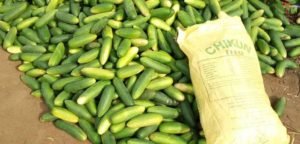


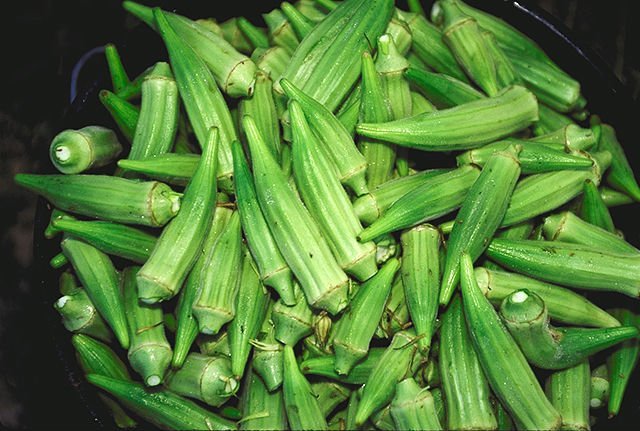

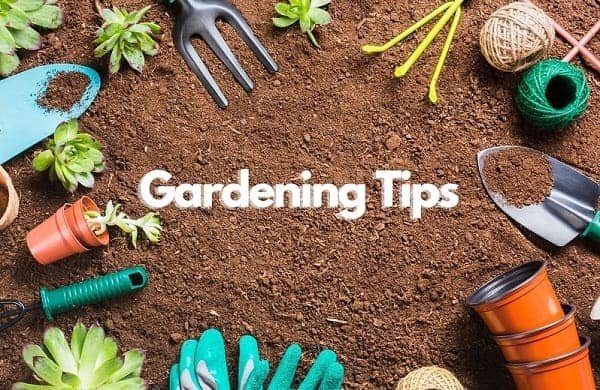
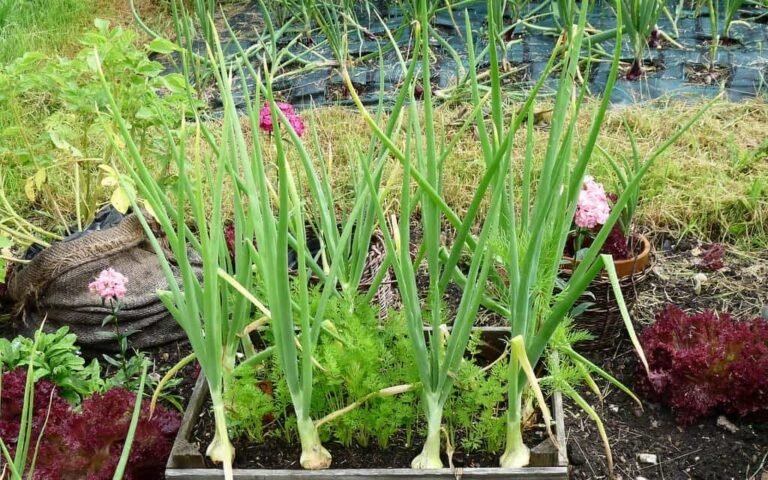


This information is eye opening. Thanks alot. Please I tried joining the group today, 20 February 2023 it says that the group is full. Please can you create another group. Thanks.
Thank you Debbie. You can try the group link again.
Very good information and well explained. Thanks you sir.
You are welcome, Kennedy.
A-Z information on planting and harvesting cucumbers and selling self explanatory enough. Thanks for your wealth of experience and impartation.
It’s highly imparting.
Well written and attention drawing. Your respect sir! Cucumber farming is everything!! Thanks a lot
Thanks a lot.
Simply written but so inspiring. Wasted too many years on other crops. Time for new frontiers. Thank big
Awesome. Cucumber farming is a goldmine.
Thanks for this wonderful write up. Very educative, informative and inspiring. I have learnt a lot and hope to practice same. Cheers!
All the best, Sylvanus. I hope you get started soon on your cucumber farming journey.
Cheers to your success.
Thank you
This really help
Please where can I get automated irrigation system
Send an email to [email protected] and you will be connected with a cucumber farmer who may have that information.
Cheers.
helpful
Thanks, Samuel. I’m glad that this cucumber farming guide is helpful to you.
Highly informative!
Thanks for the feedback
Good information. Please link me to international markets for cucumber
Cucumber may be too expensive to export.
It will be a futile business.
Instead, look for grocery stores or malls to sell to.
Thank you so much for sharing your ideas, experience and marketing strategy, I’ve achieved a lot from this, thanks.
You’re welcome.
Thanks alots, nice work may god bless you.
Thank you.
Thanks alot sir for this article. But sir concerning fertilizing the farm how should i do it the right way because any time i apply chemical fertilizer it kills the plant what should i do. I will grateful to see your reply sir.
Watch this video to see the practical steps to take when applying fertilizer to your cucumber farm. https://youtu.be/MWWqpHwSvM4?t=166
Thanks for the write up God bless you,pls. Add me to the watsup group and pls is their any way I can contact you thanks sir God bless u
Thanks for the write up. It really give me go ahead n more enlightening about cucumber. I’m trying to join the whatsApp group, but has been filled up. Any otherway to contact u pls? God bless the writer.
Thanks for your feedback. Please, try the Whatsapp group button again.
Thanks for your elaborate teaching, am really impressed. You are so generous, no haurding of information.
I have been planting cucumber for personal consumption, but after going through your teaching i have gathered enough information to help me with extensive farming.
May God bless you and increase you on every side. Thanks.
Thanks for your kind words.
You are welcome.
This so educative,but I wanted to plant my cucumber in a simi swampy area in October will it still needs irrigation
Thanks for your detailed explanation.
Nk.
You are welcome, Nk.
Sir Chibuzor,this is really nice.
The interesting part of it is i’m currently doing my SIWES in a farm that’s into massive cucumber production. More Grace Sir
Thank you very much, Godwin.
I must confess, this is the most detailed article on cucumber I’ve come acrossed so far .. you’re a genius! May God bless you for this. But I have an unusual request please,can I have your personal contact, maybe email address, or your Facebook name please?
God bless you sir
You are welcome, Joshua.
Nice one
Thank you very much.
That was a detailed information on Cucumber farm.. I have been clearfield on the questions that have been on head for some while now. Thank you so much.
I’m glad this article has been of help to you.
This is so helpful. Thanks a bunch
You are welcome, Jerry.
This Article have made my day.
So helpful.
You are welcome.
I have seen a lot of write-ups on Cucumber farming but this is one of the best I have read. I am new into this and will definitely use this piece as a guide in my farm. God bless you for Sharing. Amen.
You are welcome, Ernest.
Thanks for d post pls how can I get cucumber seedlings for planting very good ones.
Check out this Cucumber seed on Afrimash
A very incisive writeup, liberally written. May God bless the writer for bringing our way this gold mine.
Thank you so much, Femi.
You’re the Boss.
Really interesting write up, nothing is hidden in your writeup. Please keep up the good work.
Thanks a lot, Michael.
I found this piece very educative and enlightening however will it be possible for you to render assistance whenever I want to set up my commercial cucumber farming?
Not available for that at the moment. Cheers.
Am really inspired.
Thanks for sharing your knowledge sir.
I must say this is one of the most detailed writeups I have read on cucumber farming, Without the usual hoarding of VITAL information relating to my environment
Thank you for sharing your knowledge.
I had a terrible experience planting cucumber and will not wish to make the same mistakes again.
One major question I have is How effective is the formula you gave for fighting pest?
Does this work for Downey mildew disease. ( fungi infections) which are common with cucumber.
Do you have a spraying plan you use during raining season? If yes, can you share?
How often should I do this spraying if I want to plant during the raining season.
Last but not the least, can I succefully grow cucumber without stalking? If yes, how should I go about it.
I will really appreciate it if you can mentor me as I will like to give a try again and be successful hopefully in it.
Looking for word to your response.
Thank you and God Bless you for this gift.
The formula is very effective to deter insect pests from affecting the plant.
To control Downey mildew disease, you will need to use a fungicide.
Spraying plan will depend on how much sunshine you have after spraying. Make sure there is enough sunshine after spraying to make sure the mixture sticks to the plant.
You can spray once or twice depending on how severe the insect attack is.
Lastly, if you grow cucumber without stalking the cucumber fruits may rot if they come in direct contact with the soil.
Thank you very much, more grease to your elbow
Thank you for your comment, OJ
I appreciate you you. 🙏
Thanks to you, I learned greatly
You are welcome 🙏
This your article is very educative and you have clearly explained the steps that can be understood even by a layman in agriculture. Thank you very much and reward you abundantly , ameen.
Amen brother. Thanks for your comment.